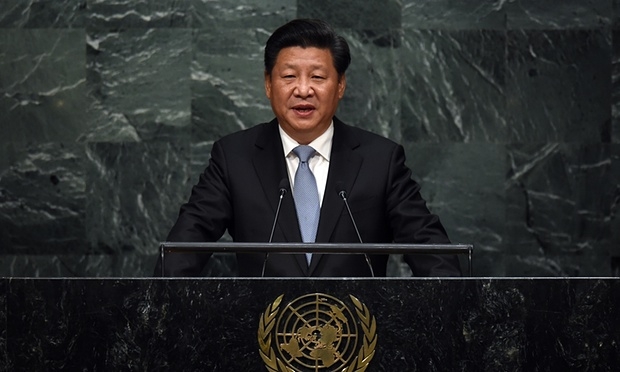
What does recent news that China is increasing support for developing countries mean for international aid?
The international development community keeps rediscovering – and misunderstanding – China. The latest episode came in September, when Chinese president Xi Jinping gave a speech at the UN after the launch of the new sustainable development goals (SDGs).
Xi pledged to support the SDGs. Specifically, China would set up a $2bn fund to support south-south cooperation. China would also try to increase its investment in the least developed countries to $12bn by 2030. Finally, his government would cancel some of the developing country debt owed to China.
The flush of media attention around these pledges suggested that they were something new and unprecedented. By giving assistance on this scale and forgiving debt, a BBC reporter wrote, China was (at last) willing to take on “more of the responsibilities that go with its status as an emerging superpower”. Others simply got it wrong. Many newspapers, including the New York Times and the Guardian wrote that China would “seek to increase the fund to $12bn by 2030”, which confused the assistance fund with the investment.
Seeing Xi Jinping’s pledges in historical context helps us to see what is actually new, and what this means for our understanding of China’s rise.
First, a south-south cooperation fund is new. It is not yet clear whether the fund will be established at the United Nations or in Beijing, but wherever it lands, it will be the largest Chinese contribution to date specifically to promote south-south cooperation (SSC). Yet we should not make too much of this. Beijing has been contributing to the UN’s SSC activities since 1981.
In 1984, when I was doing research on Chinese aid in the Gambia, I watched nine Chinese masons and a group of Gambian counterparts building a small brick factory as part of a SSC project with the UN Capital Development Fund. In another part of the Gambia, the Chinese were building a maternity clinic with the UN Population Fund. Over the decades, Chinese donations to support SSC at the UN have increased. In 2008, for example, China established a $30 million trust fund for south-south cooperation at the United Nations Food and Agriculture Organisation.
Second, although huge in the context of China’s previous SSC donations, $2bn is not a grand sum. In particular, it pales before earlier financing pledges by Chinese presidents at past UN meetings. Ten years ago, for example, Chinese president Hu Jintao told a high-level UN meeting on financing for the millennium development goals (MDGs) that China would provide $10bn in concessional loans and preferential export buyer’s credit to developing countries between 2006 and 2009 to help meet the MDGs. Loans have to be repaid. This year’s smaller figure of $2bn suggests that the new pledge is likely to be a true donation: a grant, not loans.
Third, loan cancellation is nothing new. China regularly pledges to cancel overdue debt. The first of these were announced in 2000, focusing on Africa’s least developed countries. In 2005, at that year’s UN meeting on financing the MDGs, Chinese president Hu Jintao extended debt cancellation to poor countries outside of Africa. Announcements of Chinese debt cancellations have been regular features of summits over the past 15 years. At the 2010 UN summit on the MDGs, for example, the Chinese announced that they had cancelled a total of RMB 25.6bn (about $3.6bn) as of the end of 2009.
As these relatively small figures suggest, the debt cancellation programme is limited. Countries that expected cancellation of new concessional loans from China’s Eximbank, export credits, or commercial loans were disappointed. Xi Jinping’s announcement that debt cancellation could be extended to vulnerable countries (landlocked and small island nations) was the only new feature in 2015.
Finally, why did so many news outlets combine the Chinese leader’s pledge of $2bn in a new south-south cooperation assistance fund with his next statement that China would continue to invest in the least developed countries, and strive to reach a target of $12bn by 2030?
This fits at least a decade-long tradition in the west of overestimating Chinese aid. Grants and official development aid make up a small portion of China’s toolkit for cooperation with other developing countries. After all, for 2013 alone, the US budgeted $30.9bn for official development assistance (according to the OECD), while China budgeted just $3.2bn.
The fact that the largest target was about investment (not aid) illustrates Beijing’s view that investment is a positive force for development. They are offering to use China’s vast array of incentives and instruments to direct more of it to the least developed countries. A giant among other developing countries, China is still no superpower when it comes to aid. And Xi Jinping’s September pledges make sense as a modest evolution, not a revolution.
Credit: theguardian.com









